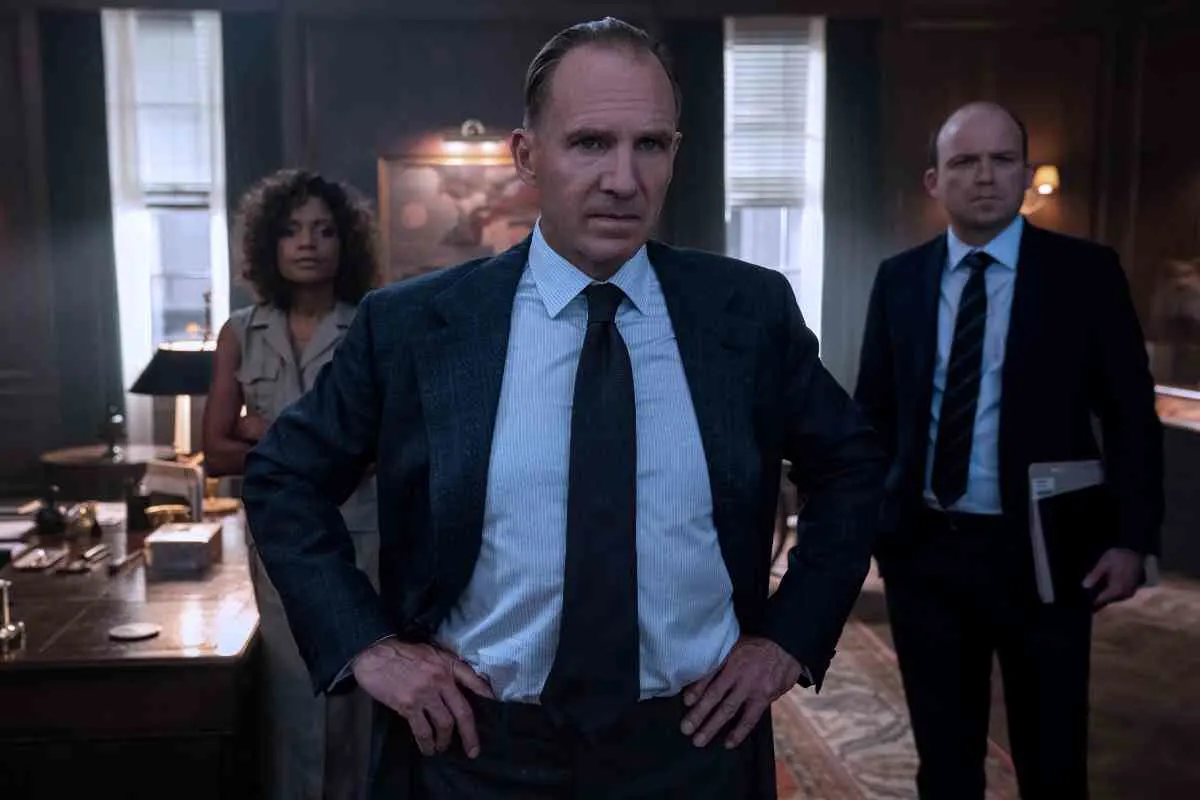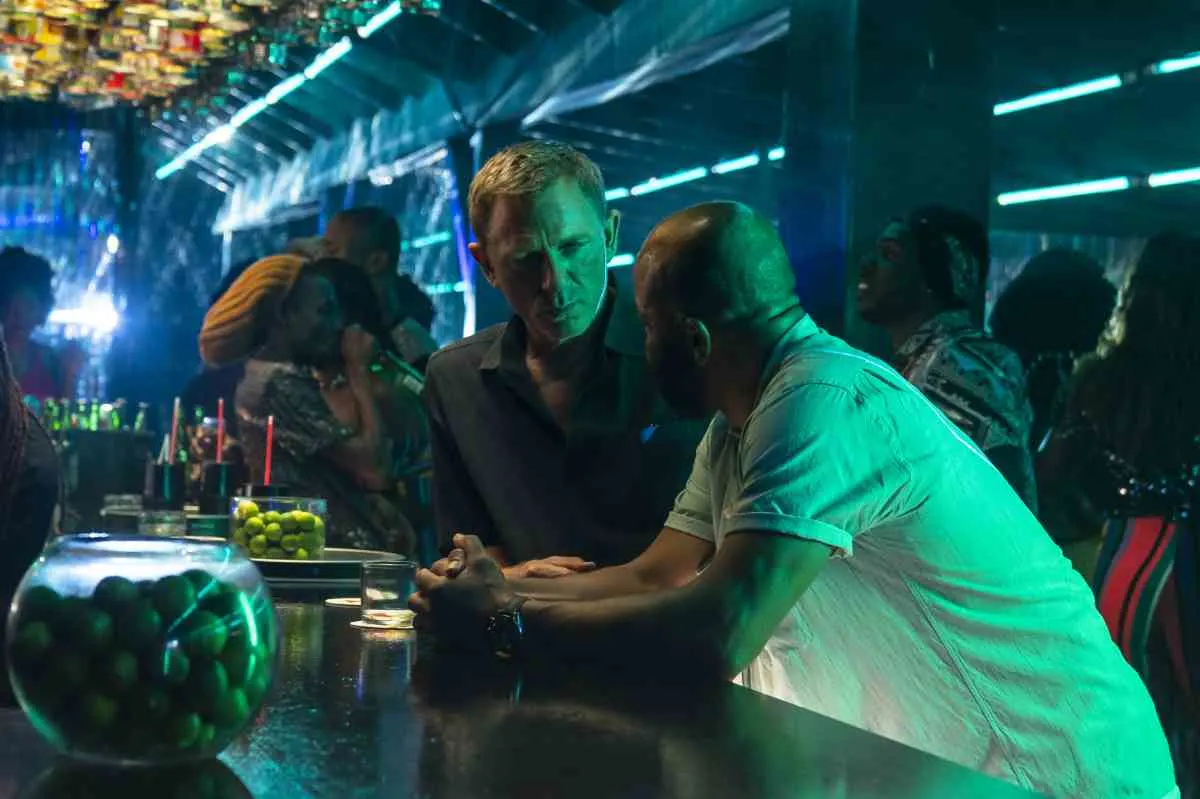The conventional wisdom in film (even, or even especially, action/adventure entertainment) is that formula is bad, an exemplar of laziness with a focus more on product than art. The other side is that the formula easily draws audiences in, and breaking it without warning is also bad because it will drive your audience away.
No series exemplifies this more than James Bond, which has remained successful for 50 years primarily because of its willingness to keep remaking Goldfinger over and over and over again and audiences’ willingness to keep watching versions of Goldfinger with minor cosmetic changes.

From the beginning, the Daniel Craig version of James Bond has been trying to subvert those expectations without losing what makes a James Bond movie a James Bond movie, which is a spectacularly tiny needle to thread. When it’s worked, it’s worked really well, and when it’s missed, it has missed badly.
As the final Craig Bond film, No Time to Die attempts to encapsulate all that this phase of the series was — both narratively and thematically — and it succeeds magnificently at that, which unfortunately is its greatest weakness.

Breaking with much Bond tradition, No Time to Die picks up shortly after the previous film with Bond’s retirement from the Secret Service to create a life with psychologist Madeleine Swann (Léa Seydoux). Of course, they quickly run into the normal relationship problems – international terrorists attempting to kill them.
His natural distrust of people in general (and women in particular) reignited, Bond abandons Swann and disappears into isolation… or at least attempts to until SPECTRE steals an experimental biological weapon for unknown purposes. Recruited by old friends and hunted by old enemies, Bond hunts for the mysterious Safin (Rami Malek), who has targeted Bond and SPECTRE alike, and worse, the mysteries of his own past.

Bond films have usually not gotten much in the way of an ending, partly because of their non-serialized nature and partly because no Bond actor has known when their last film will be until after the fact. The closest has been the much-maligned On Her Majesty’s Secret Service (which No Time to Die plays more than a little homage to, frequently as foreshadowing), but EON Productions and the cast and crew of No Time to Die have opted to lay into Daniel Craig’s final appearance as much as possible, pulling in all of the adventures this version has gone through and digging fully into how he has changed as a result.
It’s a tactic that did real narrative harm to SPECTRE, and though everyone involved this time out seems focused on not repeating that film’s mistakes (and mostly don’t), that tends to be easier said than done.

It’s not just the focus on continuity and backstory that marks this Bond as different than many others. Director Cary Joji Fukunaga (who shares a screenwriting credit) and the roster of writers — including both the returning Neal Purvis and Robert Wade (the series’ modern Richard Maibaum) and Killing Eve creator Phoebe Waller-Bridge — make the conscious decision to evolve Bond as the weight of years lays on, particularly giving him a real sense of humor (as opposed to snark) and a more open nature.
It’s not the campy self-satire the Roger Moore version could be, but it’s a far cry from the hardened killer Craig initiated in Casino Royale. Craig himself seems to approve and frequently seems to be having more fun with the role than at any point since he first took it on.

Bond’s new facets aren’t the only new pieces, as Fukunaga brings not just a distinct Bond but a distinct visual language, embracing the high contrast look of the Sam Mendes iterations into a moody, darkened landscape.
The opening intro, further breaking from tradition as a flashback for a younger Madeliene to introduce the villainous Safin, plays like a horror film as much as Safin stalks his prey through an empty house. It’s a moody grotesquery that Fukunaga returns to frequently, particularly once a henchman with a cybernetic eye is introduced.

But its biggest break with tradition is its willingness to reach back into the past. Not necessarily for easy nostalgia (though it certainly engages in that from well-worn catchphrases to putting Bond’s 50-year-old DB-5 through its paces) but for mining the previous films for primary conflicts.
Yes, there’s the typical supervillain who wants to destroy the world, though if you held a gun to my head, I could not tell you why Safin wants what he wants, partly because he doesn’t really appear until well into the second half and partly because he speaks in semi-poetic gibberish that doesn’t really mean anything.

To its credit, No Time to Die has more on its mind than that. The entire emotional core of the film is built around Bond’s love for Swann and the pain it caused him to lose her, but for that to work, real depth in their relationship is required. Unfortunately, Swann was mostly a generic Bond Girl in the previous film, leaving both tremendous backstory and character-building to be done here in order for that to work.
That’s a tall order at best, and unfortunately, Craig and Seydoux still have no real chemistry. Every other major female foil has more snap and life to her than Madeliene, particularly Ana de Armas’ spunky CIA recruit, who is only in the film for five minutes. Even a film that focused on Bond’s contentious relationship with his replacement as 007 (Lashana Lynch, who excels in similarly limited screentime) would have connected more than Craig and Seydoux.

Everyone gets lots of points for trying, but at some point, the big swing has to connect. Instead, it leaves No Time to Die hollow at the moment it needs to be strongest as it takes wild divergences from the series’ formula in the third act.
There is a pleasing finality to it for everyone and a return to that sense Craig brought in its first installment that Bond movies could be more than just Bond movies. But there’s also a palpable sense that it’s a step too far, and the series may never try such big swings again.
NO TIME TO DIE REVIEW SCORE: 6.5/10
No Time to Die is now playing at international theaters, and United Artists Releasing will release the film in North America on October 8, 2021.

Joshua Starnes has been writing about film and the entertainment industry since 2004 and served as the President of the Houston Film Critics Society from 2012 to 2019. In 2015, he became a co-owner/publisher of Red 5 Comics and, in 2018, wrote the series “Kulipari: Dreamwalker” for Netflix. In between, he continues his lifelong quest to find THE perfect tomato soup and grilled cheese sandwich combination.